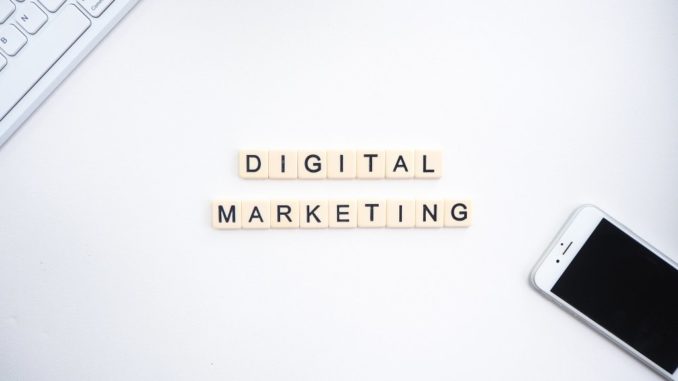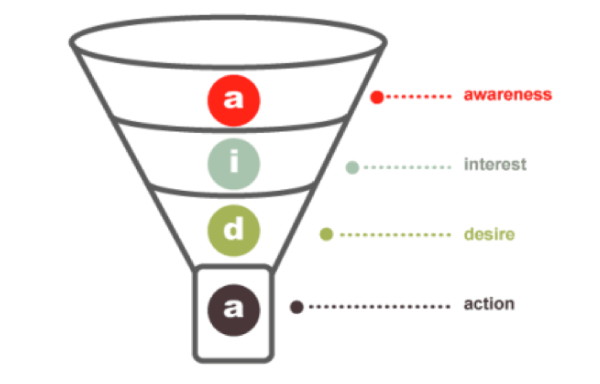
The digital landscape is always changing.
There was a time, not long ago, when all you needed to attract customers was a website. Today, many businesses feel like they are always playing catch-up.
Luckily, it’s not too difficult to stay ahead of the game. All you need is the right marketing strategy to propel your business forward.
In order to succeed in online, a solid B2B digital marketing strategy is required. This will help you focus on the right task while avoiding getting overwhelmed with strategies like SEO, content marketing and marketing automation.
Let’s discuss 10 steps that can use today to formulate the right digital marketing strategy for your business.
1. Set SMART Goals and KPIs
Do you know if your marketing is producing results? To answer this question, you should measure progress against specific targets.
This is where goal setting comes in. Goal setting gives your marketing strategy a purpose. In order to be effective, you need to create SMART (Specific, Measurable, Achievable, Realistic and Timely) goals.
Once your goals are set, you can then identify (KPIs). If goals are what you want to achieve, then KPIs track your progress against these goals. For example, if you want to get more organic traffic to your site, keyword ranking position would be one of your KPIs.
2. Establish Benchmarks
Before analyzing your KPIs, you need a starting point (often called a baseline). This is where benchmarks come in handy, and set up your marketing strategy in the right direction.
You can establish benchmarks by documenting metrics that are measurable. This includes web analytics and , such as website traffic, search engine rankings, social media page likes, comments, and shares.
3. Learn from Your Competitors
Competition exists in every niche. For your digital marketing strategy to be most effective you need to learn from your competitors. Analyze their website and social media channels to see what’s working for them. Then, see how you can improve on it.
For instance, when looking at your competitors’ website, how responsive and easy is it to navigate? If you can’t easily navigate it, this is an opportunity to make your site more user-friendly.
Make sure to look at their social media strategy. Are they using video or and posting regularly? If not, these are both good opportunities to increase your customer engagement.
uses video ads on LinkedIn to increase customer engagement and acquire more leads.
4. Create & Refine Your Customer Personas
Every marketing strategy is promoting a message.
For that message to be effective, you need to know who your customers are and what kind of messages they respond to. To achieve this, start by creating a .
Buyer personas are profiles of your perfect customer. They are created by studying what you know about your current customers. The more detailed your buyer persona, the more useful it will be for your marketing.
You can create buyer personas using information like job titles, demographics, goals, behavior patterns, pain points, challenges, and motivations. There are tools out there like to help with gathering this information.
With Alexa, you can find demographic information by uploading a list of emails, or from your competitors’ website traffic. This helps you better identify your customer persona.
5. Research Keywords for SEO & SEM
Search engine marketing (SEM) is important for your B2Bmarketing strategy.It makes your website visible to your potential customers in search engine results pages (SERPs).
Many businesses focus on paid advertising for quickly increasing traffic. A better long-term approach is to focus on search engine optimization (SEO). With SEO, you can drive traffic to the website organically and cost-effectively.
Every good SEO strategy involves ranking for relevant keywords. These are the search terms your buyer personas are looking for, such as “how to create a video marketing strategy”. Therefore, you must find these keywords to make your SEM efforts more effective. Luckily, tools like make this a breeze.
Google Keyword Planner shows relevant keywords related to “video marketing strategy.”
6. Start Creating Content
With your selected keywords, it is time to start creating content. In order to connect with potential customers, you must know where they are at in their .
Let’s say your prospect is in the consideration stage. They are likely looking for solutions to their problem. Your customer persona may search for “getting more Google reviews.”Your website content should contain keywords related to this search.
has a relevant article ranking for this the Google reviews keyword search.
Content can be very powerful for generating and engaging leads. Visme, for example, drives 5% of their direct sign-ups and 15% of indirect signups through their blog. The blog includes a combination of teaching users how to solve their design problems and moving top of funnel visitors into customers.
’s blog attracts people looking to create visually stunning infographics, presentations, data visualizations and more.
7. Make Your Website Engaging & Informative
In today’s digital age, your website is the first point of contact many customers will have with your business. This means your website should be well-optimized to provide a great user experience. It should be both well designed and have engaging informative content.
Things to consider for your website:
has created a visually stunning, easy-to-use, and mobile-responsive website designed to provide a great user experience.
8. Create Funnels for Your Visitors
As mentioned previously, having a great website today is not enough. For your marketing strategy to be successful, you also need to create conversion funnels.
A is a way to guide your potential customers into paying customers. There are four basic stages in the creation of a funnel.

There are many tools and steps needed along the way to help potential customers convert. You should also keep these 4 steps in mind when developing landing pages & home pages on your website.
’s website includes relevant information (awareness), a visible resources blog (interest), customer testimonials (desire), and a strong call to action (action).
9. Implement Marketing Automation
Marketing automation refers to automating activities using software. This allows you to automate repetitive tasks, such as email and social media marketing. At the same time, it lets personalize your messaging for different audiences.
Using email marketing software like allows you to segment your email lists and create automated newsletters based on your customer personas.
You can get very granular with marketing automation. Say you notice that emails to one customer segment have a higher open rate in the evenings. Then you can schedule to send all future emails after 4pm. This way, you also build relationships that make customers feel valued.
10. Measure & Learn from Your Results
Once you have implemented the above steps, you are now ready to measure the results. One great free tool for this is . If one of your goals was to increase engagement, you can measure how long visitors stay on your website. Then drill down into what pages are making them stay longer.
This way, you can further refine your strategy and revisit the above 10 steps to make it more effective.
Your Potential Customers are Within Reach
These 10 steps will help you develop a B2B digital marketing plan that will increase your chances of converting potential customers. Keep in mind that you need to focus on building relationships with your customers. Only then can you understand their pain points and offer your business as a solution.
Your potential customers are searching for solutions to their problems every day, meaning they are looking for you. You just need to let them find you with your well-defined marketing strategy.
